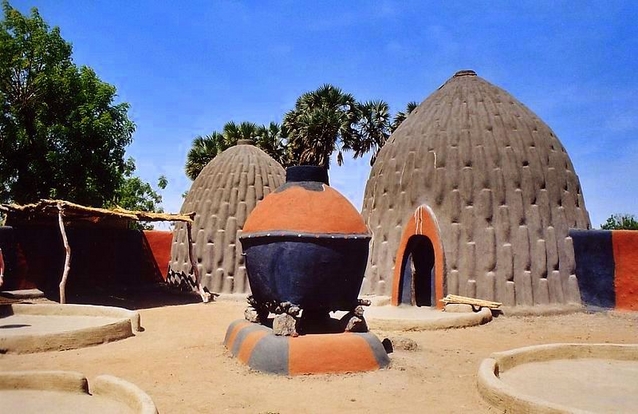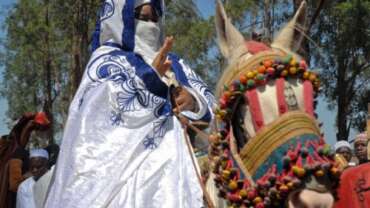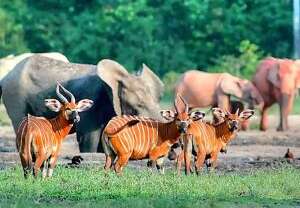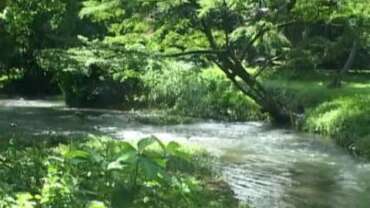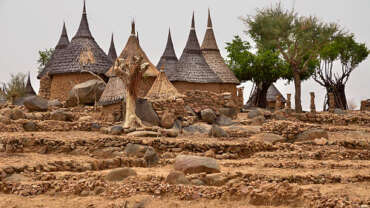Experiences in Cameroon
REASONS TO VISIT CAMEROON
Vast biodiversity
According to Cameroon’s Ministry of Wildlife and Nature Protection, the country has over 900 species of birds, over 300 species of animals and is among the richest countries in Africa in terms of biodiversity. As a result, if you are passionate about ecology and wildlife, there is a wide range of attractions that will satisfy your needs.
One of the most varied cuisines in Africa
Cameroon cuisine is one of the most varied in Africa, as the country sits between north, west, and the centre of the continent, and thanks to a strong French influence, a legacy of the colonial era. Local cuisines vary by region, but a large, one-course, evening meal is common throughout the country. A typical dish is based on maize, millet, cassava, plantains, potatoes, rice, or yams. Water, palm wine, and millet beer are the traditional mealtime drinks, although beer, soda, and wine have gained popularity.
Tea plantations
Have you ever wondered where your tea comes from? Wonder no more as you take a tour of the tea plantations located in Limbe (which also has a botanical garden) and the Ndawara Highlands in Bamenda. Set amid acres of manicured tea bushes, against a remarkable mountainous backdrop, you can watch as the tea leaves get sorted, ground and then dried. At the end of the tour, you’re rewarded with a cup of tea and biscuits.
Unique beaches
If a beach trip is on your itinerary, then rest assured, as Cameroon has some of the best, featuring fabulous, crystal-clear waters and fine, sparkling-white or black volcanic sand. If you’re looking for some of the best beaches in Africa, then Kribi in the South region and Limbe in the Southwest region are two of the best places to go.
The Pygmies of Baka
This tribe of pygmies has lived virtually the same way in the southern rainforests of Cameroon since paleolithic times. Visitors can meet the Baka and learn about their cultural and medicinal traditions on organised tours.
The Limbe Wildlife Centre
The Limbe Wildlife Centre is a wonderful example of an animal sanctuary done well. Jointly run by the Ministry of the Environment and Nature Protection and the primate charity Pandrillus, it contains rescued chimpanzees, gorillas, drills and other primates, all housed in large enclosures so you can get up close and observe these amazing animals. Here you’ll also find lots of interesting information about local conservation issues.
Mt. Cameroon
Buea is the capital of the Southwest region, and home to Mount Cameroon, a spectacular, active volcano standing 4023 metres (13,000 feet) above sea level. Mount Cameroon is one of the largest volcanoes in Africa, the highest peak in West Africa, and the fourth-highest peak in all of Africa. Eruptions at the volcano date all the way back to the 5th century BC, and you can climb it if you want – just be aware that it still erupts every 10 to 20 years.
Yaounde
West Africa may not be known for beautiful cities but Cameroon’s capital Yaounde certainly is one. The city is immaculately planned to be spread over seven hills meaning that the numerous buildings in the city are separated by stretches of lush green and rising terrain. In addition to its layout, the city is clean and safe with plenty of points of interest. The 1970’s government buildings here will appeal to culture buffs and are unusual looking to say the least. Given the central location of Yaounde it is also a perfect city to include in any tour of the country.
Maroua
Nowhere near as lush and green, Maroua still has an appeal of its own. The streets are remarkably red, sandy and dusty and the buildings are a dull beige colour but the colours of the locals clothing brings plenty of colour to the city. Maroua is a great place to experience the culture of Cameroon and its bustling markets are some of the best in the country. The city is also a great base for travllers wishing to visit the Mandara Mountains in the north of the country.
Limbe
Occupying the slopes of Mount Cameroon, an active volcanic mountain, Limbe is a city that acts as a great base for travellers who are looking to explore the beauty of the area. The botanical gardens in the city are a great place to learn about the nature and plants in the area before exploring the nearby waterfalls and national park. The mountain itself has a summit height of over 4,000m and is therefore a serious challenge but walks for novices are still possible around the base of the mountain without making a full ascent. If you are a lover of nature and wildlife then this is the place for you in Cameroon.
Douala
Douala has a reputation for being a bit grimey and insalubrious but this should not put you off visiting. This is the major city in Cameroon in most aspects; the airport is the biggest in the country, as is the port and the business centre here is the main one in the country. All of these hubs result in a chaotic and overactive feel and it is likely that you will not relax much whilst you are here. With that being said however the city is a great place to witness modern Cameroon and the few charms it offers.
Waza National Park
About 180 miles to the north of Maroua is Waza National Park. This park looks very different during the four seasons but is always a good place to witness some of the country’s most spectacular wildlife including elephants, giraffes and hyenas. Self-drive vehicles are allowed to explore the park but you will need a guide. This is not necarasilly a bad thing as you are much more likely to see the wildlife with a local guide that knows their stuff.
Bamenda
Bamenda holds the title of being the capital of Cameroon’s north-west and is a large city with all the amenities and facilities needed by travellers. The city of Bamenda is not likely to keep you interested for more than a day or two but Bamenda is a great place to reach the country’s highlands which offer beautiful lush scenery and hidden villages. The surrounding landscape is a great place for mountain biking, hiking and finding some off the radar guesthouses and restaurants.
Foumban
For art lovers, Foumban is a must-see city in Cameroon. The city has its roots in arts, music and architecture. It is also the city in Cameroon with the largest Muslim population. The city is much like a blend of North and West Africa with its Islamic influences. The Royal Palace and its adjoining museum is the main attraction here although the city’s mosque is also worth a visit while you are here.
Bafoussam
Although at first glance this city can seem busy and uninspiring, it will reward those who choose to explore. The people here are very friendly and welcoming to tourists and the palace here is a great, if not the best, example of a Royal Palace in Cameroon. The accommodation in the city is affordable and there are some true hidden gems to be found. The main tourist attraction is the tribal museum in the city which is part of the “Four Museums of Cameroon” project.
Kribi
This is the home of paradise in Cameroon. The beaches here are stunning with white sand, blue sea and fresh fish served from the restaurants lining the seafront. There are plenty of hotels in the Kribi area and most are reasonably priced. If after lounging by the beach all day you are looking for something different to do, the Chutes de la Lobe waterfalls are just 8km due south from the town. The waterfalls cascade directly into the sea forming a truly memorable sight.
Korup National Park
Korup National Park is a vast area, comprising 126,000 hectares of evergreen forest. The park is well maintained with resident scientists and well-marked trails. Many species of birds can be found in the park including hornbills and the extremely rare red headed rockfowl. Visitors to the park may even be lucky enough to see elephants or chimps although these are rare. The road access to the park can be tricky especially in the wet months when the road conditions deteriorate. It is worth noting that the Chimpanzee camp is a 7 mile hike from the Mana foot bridge, so come prepared.
Dja Faunal Reserve
The Dja Faunal Reserve is one of the largest areas of protected rainforest in Africa. 90% of the reserve consists of unspoiled and protected forest marked out by the Dja River which acts as a natural border for the area. The reserve is home to 107 mammals including a large variety of primates, for which the reserve is best known. The area is not too easy to access and a local guide is advisable.
Mefou National Park
Mefou is a project run by volunteers just outside of Yaounde. The park is a rehabilitation centre for apes including chimps and gorillas. The staff at the national park are very helpful and can arrange a guided tour of the facilities if requested. The park is easily reached if you have your own vehicle. Just be sure to take enough food and drink for the day as the park’s facilities are limited in this respect.
Dschang
This city, located in the West province of Cameroon, is growing quickly and the population has increased tenfold in the past 20 years. The main attractions in the city are the Museum of Civilization, which explores the history of Cameroon through its tribes and cultures, and the Center le Cinematique which, as it sounds is a museum centered around film. The latter of these two attractions seems to have been neglected in recent years but the Museum of Civilization is still a great learning experience for visitors to Cameroon.
Garoua
Garoua, the capital of the North, is located on the banks of the Benue River. The city is a hive of industry and thrives as a river port exporting everything from petroleum to animal hides. Several game reserves in the area mean that tourists often stay within Garoua and use the city as a base. The city itself has few attractions but does have amenities, guesthouses and restaurants making it a worthy place to stay when visiting the local game reserves.
Campo Ma’an National Park
This massive national park covers an area of 264,000 hectares. The landscapes confined within this massive area are as diverse as you would expect. From mountains to rainforest, the diverse landscape is home to mammals, birds and even sea turtles which make their nests on the beaches here. Having your own vehicle is the best way to see the area and the few basic hostels in the park are fine for a few nights stay. In total, there are more than 80 species of mammals at the park and more than 300 bird species pop up here throughout the year. The National Park is funded by the WWF and is supported further by timber and palm oil plantations in the area.



